-
Global warming may affect oxygen-producing ocean phytoplankton
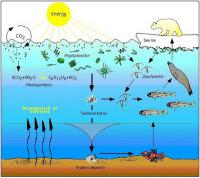
Past and current climate change has affected the food sources in the surface waters in the North Pacific Ocean. Climate change is predicted to alter marine phytoplankton (algae and diatoms) communities and affect productivity, biogeochemistry, and the efficacy of the biological pump. The slow global warming over the most recent approximate 150 years – roughly corresponding to the industrial revolution — has been beneficial, seeing an increase in nitrogen fixing cyanobacteria resulting in food production. “It’s sort of a carbon credit because the phytoplankton are making their own nitrogen-based fertilizer out of dissolved nitrogen,” says one researcher. But if global warming continues, the consequences may be dire. “This picoplankton community shift may have provided a negative feedback to rising atmospheric carbon dioxide, during the last 100 years. However, we cannot expect this to be the case in the future,” the researcher said.
-
-
Depletion of ocean phytoplankton could suffocate life on planet Earth

About two-thirds of the planet’s total atmospheric oxygen is produced by ocean phytoplankton — and therefore cessation would result in the depletion of atmospheric oxygen on a global scale, which could threaten the mortality of animals and humans.
-
-
Coal plant plans could make it impossible to hold warming below 2°C
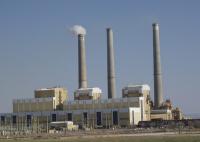
There are 2,440 planned coal plants around the world, totaling 1428GW, which could emit approximately 16-18 percent of the total allowed emissions in 2030 (under a 2°C-compatible scenario, medium range). If all coal plants in the pipeline were to be built, by 2030, emissions from coal power would be 400 percent higher than what is consistent with a 2°C pathway, according to a new analysis.
-
-
Climate change poses multiple threats to global food system
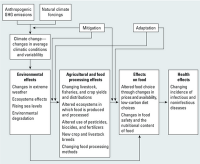
Climate change is likely to have far-reaching impacts on food security throughout the world, especially for the poor and those living in tropical regions, according to a new international report. The report warns that warmer temperatures and altered precipitation patterns can threaten food production, disrupt transportation systems, and degrade food safety, among other impacts. As a result, international progress in the past few decades toward improving food security will be difficult to maintain.
-
-
Social sciences are best hope for ending debates over climate change
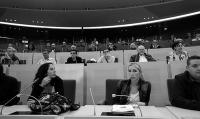
The toxicity of the public debate in the United States over climate change is increasing, and to detoxify the debate, we need to understand the social forces at work. We must recognize that the public debate in the United States over climate change is not about carbon dioxide and greenhouse gas models; it is about opposing cultural values and worldviews through which that science is viewed. The opposing sides have less to do with the scientific basis of the issue and more to do with the ways in which people receive, assess, and act upon scientific information. To move forward, we have to disengage from fixed battle on one scientific front and seek approaches that engage people who are undecided about climate change on multiple social and cultural fronts. Only by broadening the scope of the debate to include this social and cultural complexity can we ever hope to achieve broad-scale social and political consensus. More scientific data can only take us so far; engaging the inherently human aspects of this debate will take us the rest of the way.
-
-
2015 likely to be warmest on record, 2011-2015 warmest 5-year period: WMO
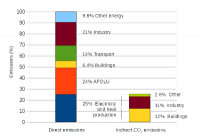
The global average surface temperature in 2015 is likely to be the warmest on record and to reach the symbolic and significant milestone of 1° Celsius above the pre-industrial era, according to the World Meteorological Organization (WMO). The years 2011-2015 have been the warmest five-year period on record, with many extreme weather events — especially heatwaves — influenced by climate change. Levels of greenhouse gases in the atmosphere reached new highs, with global average concentration of CO2 crossed the 400 parts per million barrier for the first time. “This is all bad news for the planet. Greenhouse gas emissions, which are causing climate change, can be controlled. We have the knowledge and the tools to act. We have a choice. Future generations will not,” said WMO secretary-general Michel Jarraud.
-
-
Paris pledges, if implemented and followed, can avert severe climate change
More than 190 countries are meeting in Paris this week to create a durable framework for addressing climate change and to implement a process to reduce greenhouse gases over time. A key part of this agreement would be the pledges made by individual countries to reduce their emissions. Scientists say that if implemented and followed by measures of equal or greater ambition, the Paris pledges have the potential to reduce the probability of the highest levels of warming, and increase the probability of limiting global warming to 2 degrees Celsius.
-
-
Global climate shift in the 1980s largest in 1,000 years
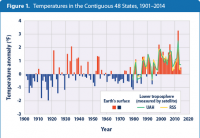
Planet Earth experienced a global climate shift in the late 1980s on an unprecedented scale, fueled by anthropogenic warming and a volcanic eruption, according to new research. Scientists say that a major step change, or “regime shift,” in the Earth’s biophysical systems, from the upper atmosphere to the depths of the ocean and from the Arctic to Antarctica, was centered around 1987. The scientists document a range of associated events caused by the shift, from a 60 percent increase in winter river flow into the Baltic Sea to a 400 percent increase in the average duration of wildfires in the Western United States. It also suggests that climate change is not a gradual process, but one subject to sudden increases, with the 1980s shift representing the largest in an estimated 1,000 years.
-
-
How bad will this El Niño be? Worse than you may think

Last week, Columbia University Earth Institute’s International Research Institute on Climate and Society convened a 2-day workshop reflecting on efforts over the past twenty years to improve responses to climate variability, especially risks associated with El Niño. Concerns that the current El Niño has the potential to exceed in severity the devastating El Niño of 1997-98 permeated the discussion. At the conference, Marc A. Levy of the Earth Institute presented a brief overview of the social, economic, and political changes that will have a large effect on human impacts from El Niño. He amplifies those remarks here.
-
-
Records: October, year-to-date hottest in human history
October 2015 was the hottest October in modern history, and the first ten months of the year have also set new records for worldwide warmth, U.S. government scientists at the National Oceanic and Atmospheric Administration (NOAA) said last week. The combined average temperature over global land and ocean surfaces for October 2015 was the highest for October in the 136-year period of record, at 0.98°C (1.76°F) above the twentieth century average of 14.0°C (57.1°F). The first ten months of 2015 comprised the warmest such period on record across the world’s land and ocean surfaces, at 0.86°C (1.55°F) above the twentieth century average, surpassing the previous record of 2014 by 0.12°C (0.22°F).
-
-
Small landscape changes can yield big freshwater gains
A typical bird’s-eye view of the Midwest offers a patchwork landscape covered mostly by agriculture but mottled with forest, wetland, grassland, buildings, and pavement. This pattern influences the quality and supply of the many natural benefits the landscape provides people, including freshwater. A new opportunity for improving the health and supply of Wisconsin’s lakes, waterways, and groundwater has emerged from a recent study showing that making small tweaks to how large some of those patches in the pattern are could mean big freshwater benefits, especially where making drastic changes to the landscape would be hard, as is the case throughout much of the state.
-
-
Global climate finance increases to $391 billion
A new report about the world’s inventory of climate finance shows that more money than ever before — at least $391 billion — was invested in low-carbon and climate-resilient actions in 2014. Private actors invested $243 billion in renewable energies, a surge of 26 percent from 2013, which resulted in record solar PV and onshore wind deployment. Public finance reached at least $148 billion continuing its steady growth over the past three years. Also, 74 percent of total climate finance ($290 billion) and 92 percent ($222 billion) of private investment was raised and spent in the same country. The domestic preference of climate finance highlights the importance of domestic investment policy and support frameworks.
-
-
Investment portfolios may take short-term hits as a result of climate change sentiment
A new report reveals that global investment portfolios could lose up to 45 percent as a consequence of short-term shifts in climate change sentiment. The report concluded that about half of this potential loss could be avoided through portfolio reallocation, while the other half is “unhedgeable,” meaning that investors cannot necessarily protect themselves from losses unless action on climate change is taken at a system level.
-
-
Declining snow packs put many nations' water supplies at risk
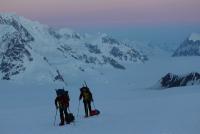
Gradual melting of winter snow helps feed water to farms, cities, and ecosystems across much of the world, but this resource may soon be critically imperiled. Scientists have identified snow-dependent drainage basins across the northern hemisphere currently serving two billion people that run the risk of declining supplies as a result of global warming. “Water managers in a lot of places may need to prepare for a world where the snow reservoir no longer exists,” one scientist says.
-
-
Greenhouse gas concentrations in the atmosphere hit another record
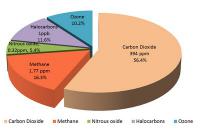
The amount of greenhouse gases in the atmosphere reached yet another new record high in 2014, continuing a relentless rise which is fueling climate change and will make the planet more dangerous and inhospitable for future generations, according to the World Meteorological Organization (WMO). The pre-industrial level of CO2 — of about 278 ppm — represented a balance between the atmosphere, the oceans, and the biosphere. Human activities such as the burning of fossil fuels has altered the natural balance, and in spring 2015, the global average concentration of CO2 crossed the 400 ppm barrier. The global annual average is likely to pass 400 ppm in 2016.
-
More headlines
The long view
How Climate Change Will Affect Conflict and U.S. Military Operations
“People talk about climate change as a threat multiplier,” said Karen Sudkamp, an associate director of the Infrastructure, Immigration, and Security Operations Program within the RAND Homeland Security Research Division. “But at what point do we need to start talking about the threat multiplier actually becoming a significant threat all its own?”
